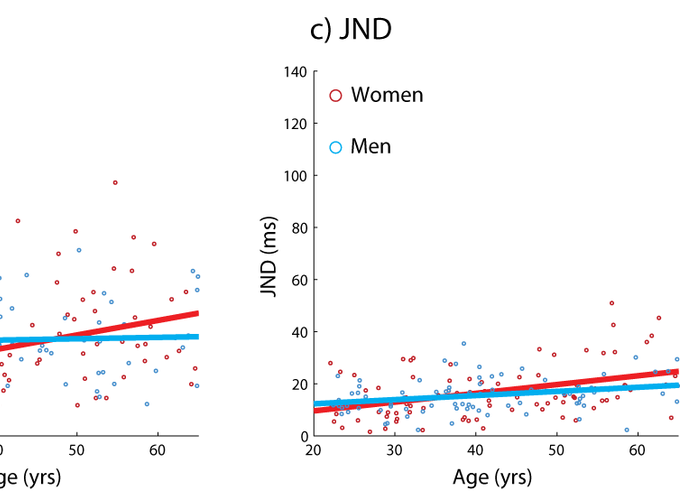Sexual dimorphism in temporal discrimination

Sexual dimorphism in temporal discrimination
Abstract
The temporal discrimination threshold (TDT) is the shortest time interval at which two sensory stimuli presented sequentially are detected as asynchronous by the observer. TDTs are known to increase with age. Having previously observed shorter thresholds in young women than in men, in this work we sought to systematically examine the effect of sex and age on temporal discrimination. The aims of this study were to examine, in a large group of men and women aged 20–65 years, the distribution of TDTs with an analysis of the individual participant’s responses, assessing the “point of subjective equality” and the “just noticeable difference” (JND). These respectively assess sensitivity and accuracy of an individual’s response. In 175 participants (88 women) aged 20–65 years, temporal discrimination was faster in women than in men under the age of 40 years by a mean of approximately 13 ms. However, age-related decline in temporal discrimination was three times faster in women so that, in the age group of 40–65 years, the female superiority was reversed. The point of subjective equality showed a similar advantage in younger women and more marked age-related decline in women than men, as the TDT. JND values declined equally in both sexes, showing no sexual dimorphism. This observed sexual dimorphism in temporal discrimination is important for both (a) future clinical research assessing disordered mid-brain covert attention in basal-ganglia disorders, and (b) understanding the biology of this sexual dimorphism which may be genetic or hormonal.